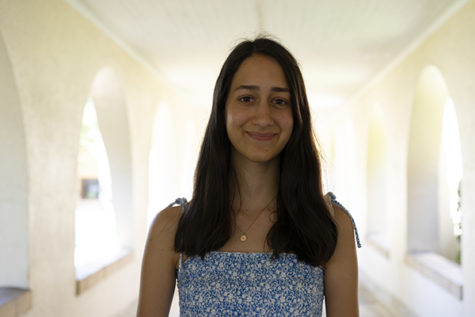Pop! Art
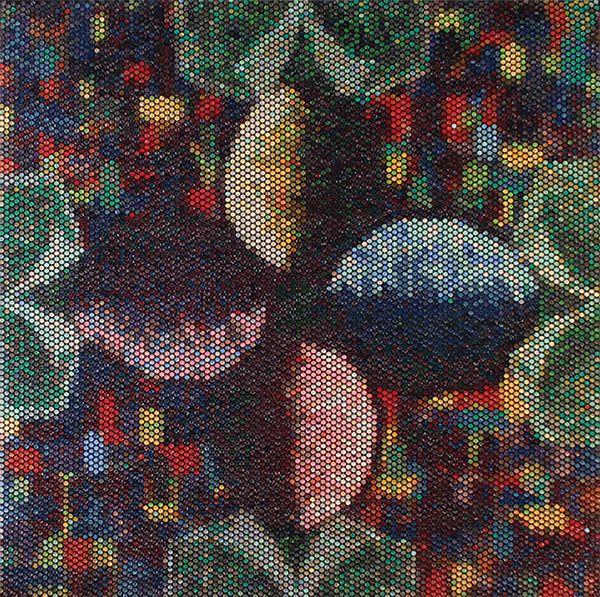
As you approach your house after a long day, you notice a package on your doorstep. You beam with excitement as you open the package, not because of the item inside but rather the material in which it lays: bubble wrap. You can’t wait to pinch the perfectly filled sheets of bubbles and satisfyingly pop the air pockets. Many consumers find pleasure in playing with bubble wrap as they twist, poke and pinch until the sheets become completely flat. Some, however, prefer to keep these bubbles intact and repurpose the material. On top of protecting fragile cargo, bubble wrap has morphed to become a new medium and canvas for modern artists. In recent years, a few individuals have created a new innovative art style known as bubble wrap art.
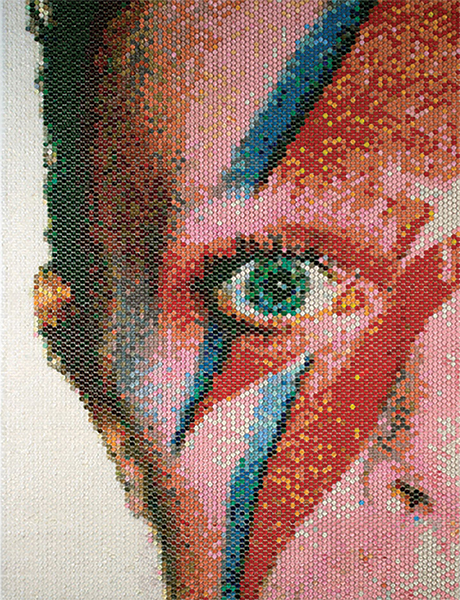
Bradley Hart, a New York based artist, is a pioneer of this relatively new art form. Hart’s work features a curated collection of pictures and memories expressed through bubble wrap. Using a syringe, he injects the bubble wrap with acrylic paint to create a semi-realistic, pixelated image. After injection, the excess paint drips out through the back of the bubble and is hidden from the front of the painting. On his Instagram account @bradleyhartnyc, Hart often posts short, closeup video segments of the bubbles filled with paint. As he pans out to show the collective whole of the artwork, viewers are left amazed at how large and intricate of the collective piece. What appeared to be small, paint-filled bubbles transforms to become a visually alluring masterpiece.
“The injection process is complex and time-consuming, which highlights the irony of applying such delicate physical artistry to a mass-produced material and the indestructible nature of plastic versus the fragility of bubble wrap,” Hart said on his website and digital portfolio @bradleyhart.ca. In an interview with Insider, Hart mentions that it takes him around three to four weeks to complete a single painting, using between 1,800 to 2,500 needles. While this seems wasteful, Hart recycles all of the materials he uses and collects any excess paint. He then creates art pieces from the waste he has made to craft more engaging pieces.
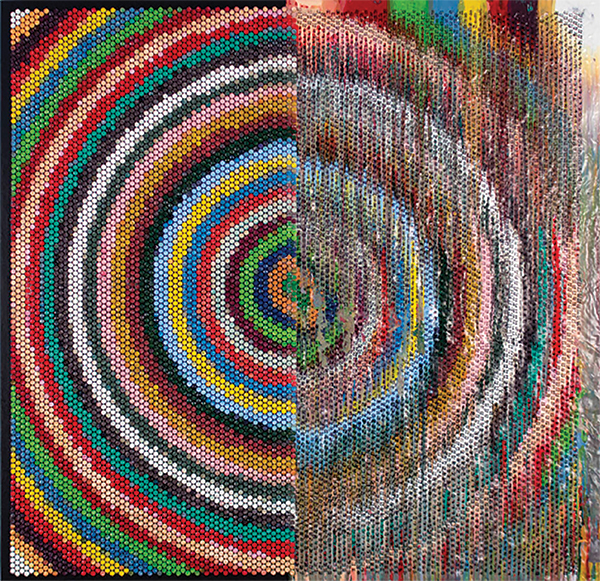
Bubble wrap not only serves as Hart’s canvas, but also as a container for his thoughts. He views each bubble in his canvas as a pixel, emphasizing how art history is moving from being strictly physical to now being created within a technological and digital realm. He creates and stores his artwork similarly to how households keep photo albums. “In today’s world, people do not print their pictures for an album,” Hart said on his website. “Their albums are on Facebook, Flickr and Instagram, all exotic rote, yet combinations of 1’s and 0’s.” By using this art style in a traditional approach with muted color palettes and portraits, he connects the foundation of art to how it is now used in present times.
Each piece in Hart’s artistic album is meant to evoke a certain narrative consisting of specific memories he has chosen. He often chooses to portray distinct people in his life, specific places and unforgettable cityscapes. Hart believes that an album is meant to be shared with loved ones in order to strengthen the interpersonal connections within someone’s life. “I hope the viewer will contemplate what a personal album means as a work of art… These albums, devoid of personal context for the viewer, will require something antithetical to the usual purpose of an album,” Hart said. “Will the viewer strive to find meaning in the collection of images that are strung together for reasons unknown?”
Others have combined functionality into their bubble wrap art. As a design student at the Université du Québec à Montréal, Michèle Beauchamp-Roy participated in the competition Packplay, which is a user-centered packaging competition. She received the “Best of Show” award for her creation “Brrr,” a vodka bottle package created with bubble wrap.
Beauchamp-Roy turned bubble wrap into a parka-like covering for the bottle and filled each air pocket with concentrated cranberry juice. The resulting creation is a bottle wrapping that keeps the drink cold. Once a user opens the bottle of vodka, they can then freeze an air socket filled with cranberry juice and mix the frozen tablet with the vodka in the bottle, turning it into a cocktail.

Prior to Packplay, Beauchamp-Roy used bubble wrap solely for its explicit purpose. “At that time I didn’t know it was an art style, but I stumbled upon this material mostly because of its formal properties,” Beauchamp-Roy said. Her complete project involved injecting bubble wrap with resin and using a sandblasted bottle as the model for the covering.
This practical packaging piece, however, has a deeper symbolic value. “We were asked to showcase a product one hundred percent Quebec, so I came up with a vodka and cranberry juice,” Beauchamp-Roy said. “Since we are a Nordic country, I played with the concept of winter to create a fun and creative product.” Beauchamp-Roy brought together two of Quebec’s most known products — vodka and cranberries — and formed them into a winter coat for the vodka bottle. While art is not her main profession, Beauchamp-Roy continues to implement her creative thinking skills within her job as a designer.
The new shift to using materials that are typically thrown out or considered trash has proven to have a positive impact on the environment. “It’s great to use media that is literal trash and that we are not using and will probably hurt the environment,” Paly art student Sebastian Cartright said. “It’s nice to see how we repurpose something harmful to make the world better.” Through this medium, artists are able to simultaneously lessen trash output and broaden their horizons. “We have so much trash in our oceans and in our giant garbage dump,” Lily Welsh, another art student at Paly, said. “It’s a creative way to show your passion for art.”
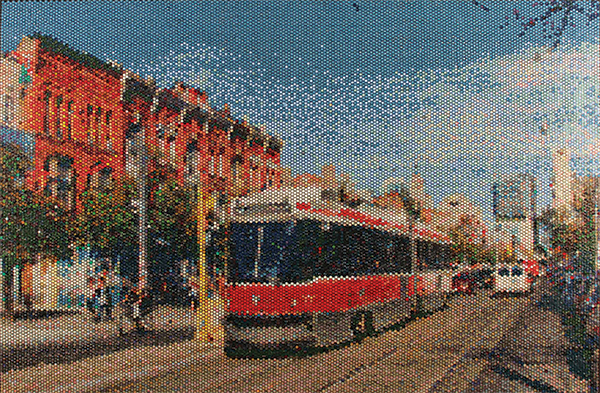
Artists like Hart and Beauchamp-Roy have pushed boundaries and extended the limits of artistic expression for functional, visual and symbolic purposes. By using quirky mediums found in everyday households, it is clear that everything has the potential to become art — even bubble wrap.
Photos courtesy of Bradley Hart and Raymond Lancôt
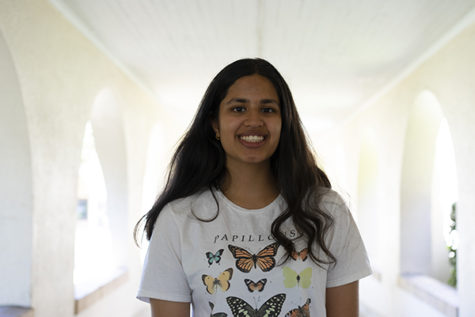
Mahati Subramaniam joined C Magazine because of the variety of content that was present, and the interesting designs. Her favorite part of C mag is production...


